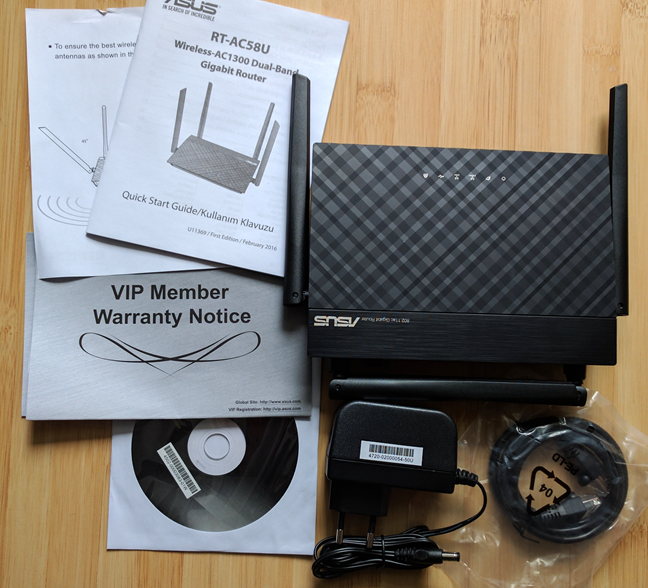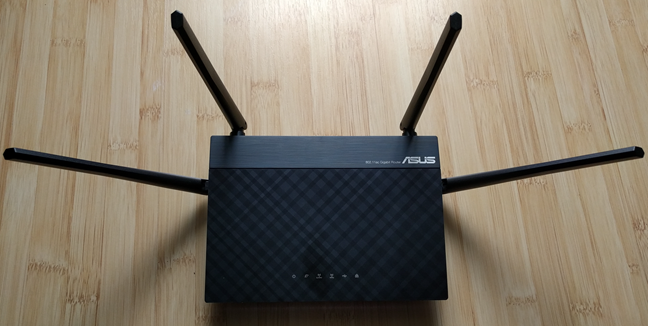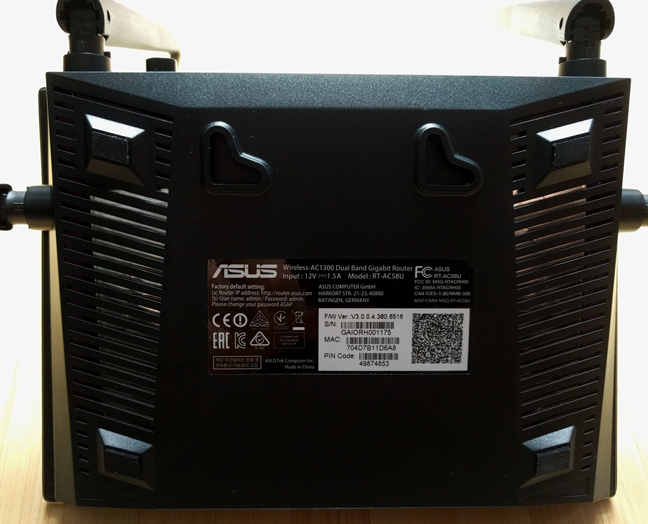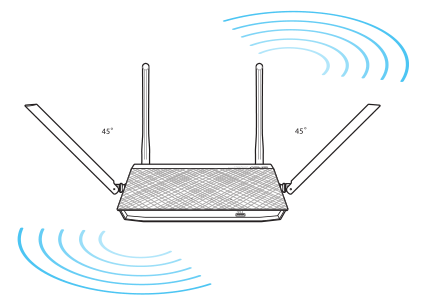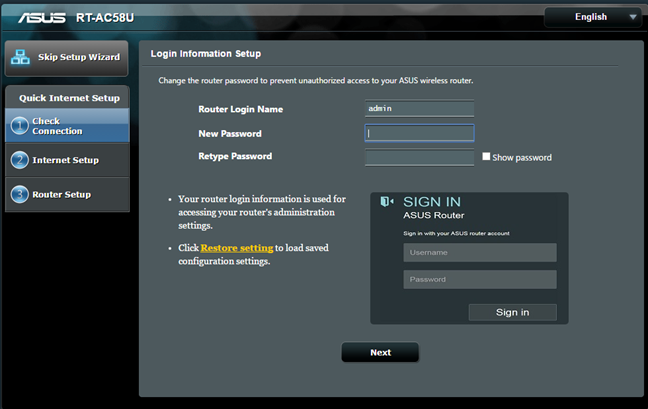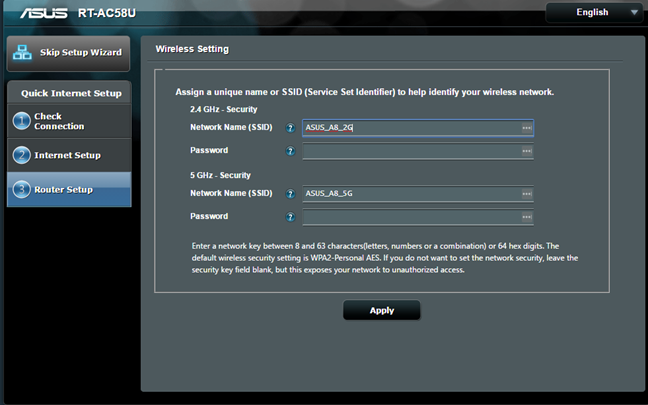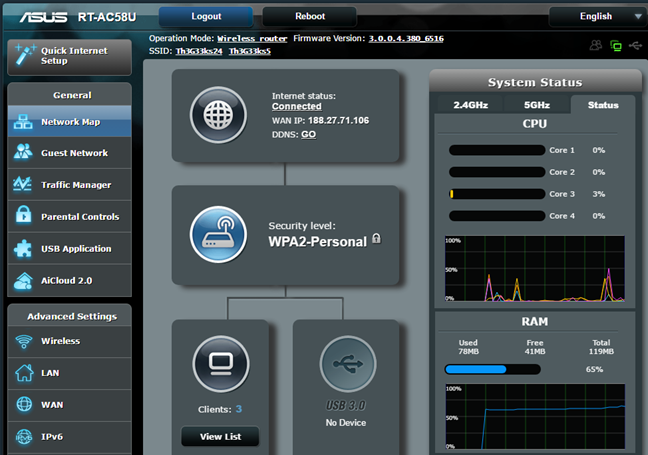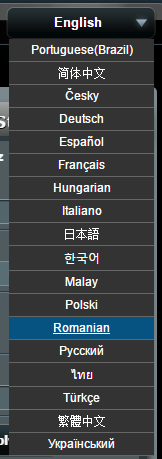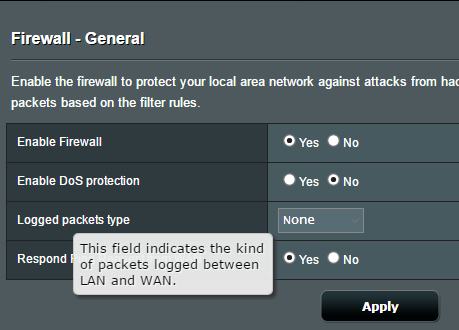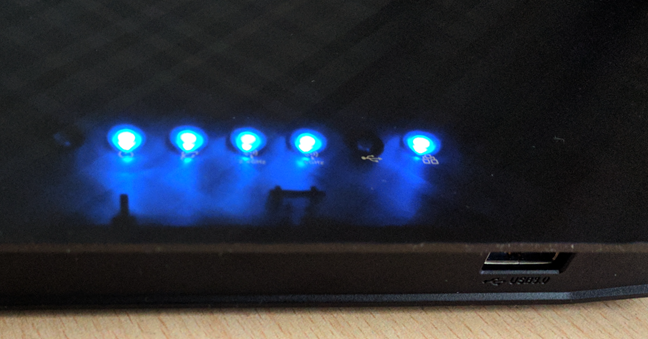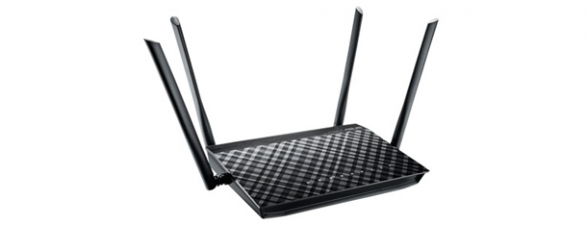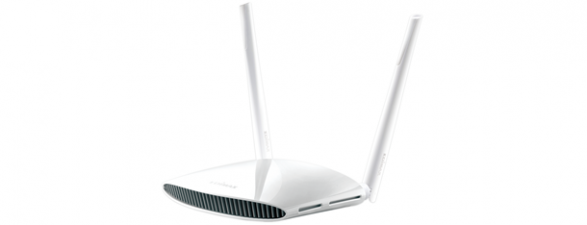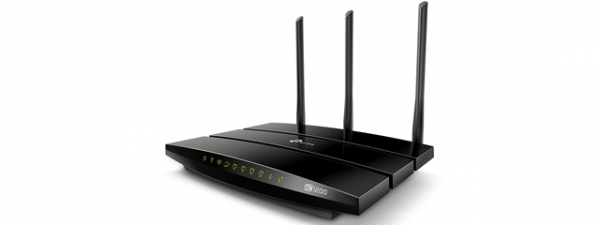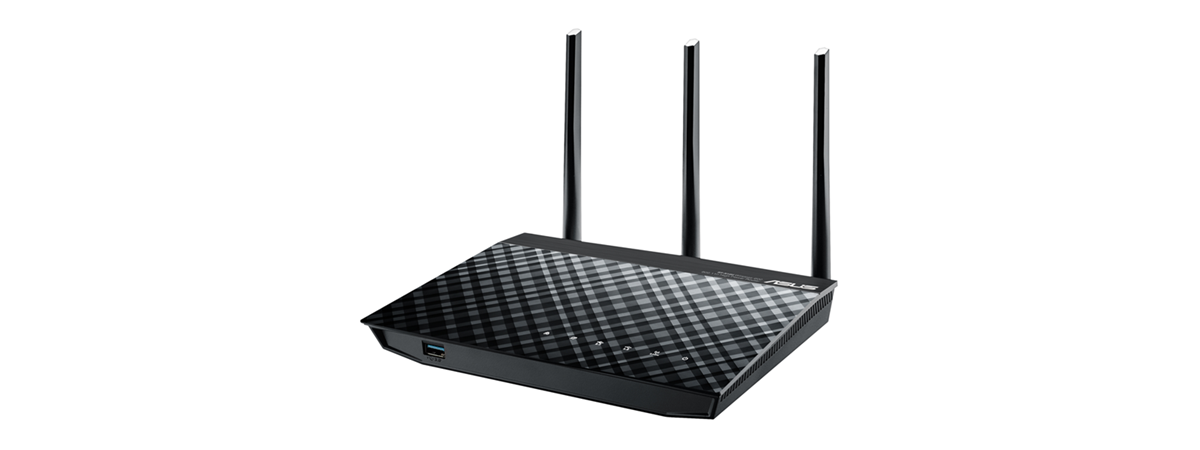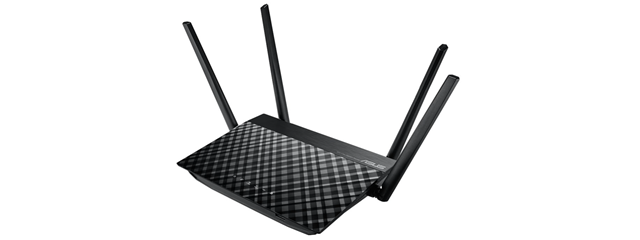
ASUS RT-AC58U AC1300 is a new router that aims to compete in the crowded space of wireless routers that cost somewhere between 100 and 150 USD. It stands out because it includes a new quad-core processor that is included in very few routers. This processor is industry's first single-chip Wi-Fi system-on-chip to bring Wave-2 802.11ac features that were standardized in 2016. In theory, we should get amazing performance at an affordable price. But does this router deliver on this promise? Let's find out from this review:
Unboxing the ASUS RT-AC58U AC1300 dual-band wireless router
The ASUS RT-AC58U AC1300 dual-band router comes in a simple box with a picture of the device on the top and a list with some of its most important features: the total maximum theoretical bandwidth, its support for 3G/4G dongles and so on.
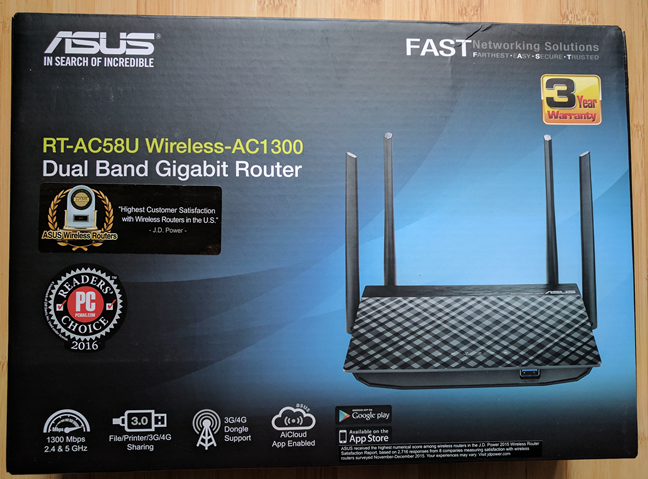
On the back side of the box you will find a description of its main features, including its quad-core processor, improved wireless range and so on. When you open the box, inside you will find the following: the router, the power adapter, a support disc, the warranty, a quick start guide and a network cable.
The unboxing experience offered by the ASUS RT-AC58U AC1300 wireless router is quick and pleasant. Inside the box you will find all the elements you would expect from a WiFi router.
Hardware specifications and design
ASUS RT-AC58U is a wireless router with four external antennas. As you can see in the picture below, they are very tall and they cannot be unscrewed from the router, which may be a downside for some users. The antennas are used for delivering MU-MIMO wireless connections which means fast and stable connections for devices that support this technology. Two of them are used for the 2.4 GHz wireless frequency and the other two for the 5 GHz frequency.
ASUS RT-AC58U is one of the first wireless routers to feature a quad-core Qualcomm IPQ4018 processor, running at 717 MHz. This processor is the industry's first single-chip Wi-Fi system-on-chip (SoC) to bring Wave-2 802.11ac features. The processor is complemented by 128 MB of RAM memory and 128 MB of storage space for the firmware and the software features of this router. Obviously, this router offers support for all the modern networking standards, including 802.11ac and 802.11n.
On the back side of the router, we have the WAN port alongside four Gigabit Ethernet ports, the WPS button, the power jack, a button for turning the router On and Off, and a jack for resetting the settings of the ASUS RT-AC58U.
On the front side of the router we can find the usual LED lights that indicate the status of the router's functioning and a USB 3.0 port.
The size of this router is quite small, at 8.1 x 5.8 x 1x4 inches or 207 x 148.8 x 35.5 mm in Length, Width and Height. ASUS RT-AC58U weighs only 395 grams or 13.93 ounces.
If you want to learn more about the characteristics of this wireless router, read its official web page: ASUS RT-AC58U Specifications.
Setting up and using the ASUS RT-AC58U AC1300 dual-band wireless router
One of the first things we noticed is that the ASUS RT-AC58U cannot be easily mounted on walls and other surfaces, since it doesn't have a VESA mount on the bottom.
To ensure the best wireless signal, you should place it on a flat surface and orient the four antennas as shown in the drawing below.
The firmware setup is easy and quick, just like on any other ASUS wireless router. First, you need to change the default username and password for administering the device, which is a great security precaution. Then, the router detects the type of your internet connection and it requests the appropriate connection details.
After you provide them, you are asked to set up the two wireless networks that are broadcast by the router.
At the end of the initial setup, you are shown a summary of your settings. You can access the administration user interface and get into more advanced settings, which we recommend you do. One new feature that we observed on the Network Map for this router, is the Status tab, where you can see how much of your router's processor cores and RAM memory are used. It's a neat little feature that can be useful when troubleshooting problems. Also, you can quickly tell when you have enabled too many features and they end up using too much of its hardware resources.
The user interface is neatly organized and easy to navigate. As always, ASUS provides great multilingual support. Below you can see the 18 languages in which you can use the administration interface.
All the settings are very well organized and you can easily find what you are looking for. One neat little feature is that help is easily available: if you don't understand what a setting does, move the mouse cursor on top of its name and, if you see a question mark displayed, click the left mouse button. Then, a tooltip is shown with more information about that setting.
As always with ASUS routers, advanced users will be pleased by the level of control they get. All the features of this router can be customized in detail and, by default, only the basic services are turned on, so that they don't consume precious resources.
When you are done setting everything, you should connect all your computers and devices to the network. This process is quick and easy. We were able to immediately share files and folders over the network, do media streaming, install a wireless printer and other activities.
One aspect that irritated us a bit are the LEDs on the top side of the router. In small rooms, they can get quite annoying during the night. Luckily, you can fiddle with the settings of this router and set the WPS button to act as a button for turning them On and Off, which is great.
In the week that we tested this router, we were generally pleased with its performance. However we did notice a few issues:
- Applying changes to wireless settings can take a long time and require a restart of your router.
- During one night, the two wireless networks stopped broadcasting, even if we did not set any schedule for their operation. We had to restart the router and then everything was back to normal.
- We noticed performance drops for brief periods of time. During most of our testing, ASUS RT-AC58U performed well, as you will see in our sections with benchmarks. However, for brief periods of time, the speed of the wireless network would drop without any explanation and then get back to normal a couple of minutes later. This issue was encountered mostly on the 2.4 GHz wireless frequency and less on the 5GHz frequency.
These issues seem to be firmware related. The hardware on the ASUS RT-AC58U is quite able to deliver fast and stable wireless network connections and future firmware updates should fix these problems.
Setting up the ASUS RT-AC58U wireless router is quick and painless. The multi-lingual support is excellent, help documentation is easily available and advanced users will get a lot of control. However, there are a few downsides to consider: you cannot mount this router on walls and its firmware does have some stability issues that affect the wireless network (which should be fixed in future updates). Other than that, the hardware on this router is very capable of delivering very fast wireless networks, as you will see later in this review.
To learn more about the real-world performance offered by this router, as well as our final verdict, read the next page in this review.


 19.04.2017
19.04.2017 